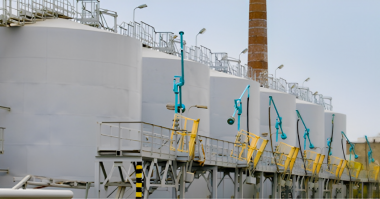Danfoss, a leading manufacturer of high-efficiency controls, compressors, heat exchangers, and variable frequency drives for air-conditioning and commercial refrigeration systems, this week participated in an industry leader roundtable hosted by the White House to reduce greenhouse gases from hydrofluorocarbons (HFCs).
Held on Sept. 16 at the Eisenhower Executive Office building, the event convened more than 20 senior executives from equipment manufacturers, end users, refrigerant producers, and industry associations in a roundtable briefing with senior White House officials, including Energy Secretary Ernest Moniz, EPA Administrator Gina McCarthy, and State Department Special Envoy for Climate Change Todd Stern. The event provided a platform for industry leaders to discuss their voluntary commitments to reduce greenhouse gases from HFCs and other efforts regarding energy and climate.
Stephen Yurek, president and CEO of the Air-Conditioning, Heating, and Refrigeration Institute, stated, “Close to $2 billion has been spent by the industry since 2009 researching energy-efficient equipment and the utilization of low global warming potential (GWP) refrigerants, and over the next ten years, the HVACR industry will commit an additional $5 billion for R&D and capital expenditures to develop and commercialize low-GWP technologies.”
Announcement of Codes and Standards Task Force
During the White House event, Danfoss announced its commitment to convening and facilitating an on-going Codes and Standards Task Force, which will set out to define a roadmap that will accelerate implementation of low-GWP refrigerants.
“State and local fire and building codes are major barriers to the broad deployment and adoption of low-GWP refrigerants in the United States,” explained John Galyen, president, Danfoss North America. “These codes often prohibit the use of flammable or even mildly flammable refrigerants, even in very small amounts less than a typical aerosol spray can. Since they are developed and mandated locally – across hundreds or thousands of jurisdictions, codes are difficult to change and create an effective obstacle to manufacturers offering products with low-GWP refrigerants that may be flammable or mildly flammable.”
“Much work also is needed to modify underpinning national model codes and standards before local standards can be changed,” Galyen continued. “The issue is complex and requires a sequential nature of modifying standards and codes, as well as broad industry training.”
The task force facilitated by Danfoss will be composed of a broad, cross-section of experts from industry, environmental NGOs, U.S. Environmental Protection Agency, UL, fire marshals, and other stakeholders with an interest in collaboration and defining the path forward.
Since July, Danfoss already has hosted three meetings to launch the Codes and Standards Task Force, with the most recent event taking place on Sept. 12.
Robert Wilkins of Danfoss, in his role as chairman of the Alliance for Responsible Atmospheric Policy, also participated in the event, announcing the Alliance’s commitment to taking actions and supporting policies to support 80 percent reduction by 2050 of HFCs on a GWP-weighted basis, working off of current emission levels.
“The Administration is announcing new federal actions to increase the uptake of safer alternatives to HFCs and encourage the development of new technologies by [for example] promoting HFC alternatives within the federal government, including by updating regulations for contractors and evaluating more sustainable options in federal buildings,” announced Counselor to the President John Podesta, moderator for the program. “The leadership demonstrated today by U.S. industries and the federal government taking on HFCs is welcome news for the planet and will help prompt other countries and companies to take action on climate change.”
To learn more about Danfoss and its broad range of technologies for use with low-GWP refrigerants, including ammonia, CO2, HFC-32, hydrofluoroolefins (HFOs), and hydrocarbons, please visit www.danfoss.us.





Comments